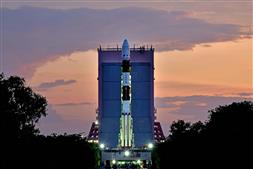Sriharikota is a location in Andhra Pradesh, and the date is September 2.
ISRO launched a mission called Aditya L1. This mission aims to study the Sun. It comes after the successful Chandrayaan-3 mission, which explored the moon.
Apart from India’s Aditya-L1, there are currently 5 missions that are watching the sun.
At 11:50 am, after a 23. 40-hour countdown, the 44. 4-meter-tall Polar Satellite Launch Vehicle (PSLV) took off smoothly from this spaceport. The spaceport is located on the eastern coast, about 135 km away from Chennai.
The PSLV will have its longest flight ever, lasting about 63 minutes.
According to ISRO, Aditya-L1 is a special device in space that will study the sun. The spaceship will travel 1. 5 million kilometers away from the earth for 125 days. Then, it will be placed in a halo orbit around a spot called L1, which is the closest point to the sun.
Among other things, it will send pictures of the sun for scientific experiments.
Scientists say there are five special points between the Earth and the Sun where a small object will naturally stay if placed there. The Lagrange Points in space can be used by spaceships to stay there while using less fuel.
A Lagrange point is a place where the gravity from the sun and the earth is balanced. This balance allows a small object to stay in the same position and move along with them.
After the rocket launches from the Satish Dhawan Space Centre, the scientists will work on putting the spacecraft in a low orbit around Earth. Once it’s there, they will make the orbit more elliptical.
The spacecraft will be launched towards a point called Lagrange L1 using its own engines. This will allow it to move away from the pull of Earth’s gravity and travel towards the L1 point. Afterwards, it would be put into a big orbit around a point close to the sun called L1.
The Aditya-L1 Mission will take around four months to reach the L1 point, according to ISRO.
The Indian Space Research Organisation (ISRO) explained why it is important to study the sun. They said that the sun gives off different types of energy and magnetic forces in almost all forms of light.
The air around our planet and its magnetic field work together to protect us by stopping dangerous radiation waves. We study the sun’s radiation from space to find it.
This mission has three main goals: understanding how the sun’s outer atmosphere gets so hot and how the solar wind is formed, studying how large bursts of solar material are launched into space, and observing space weather around Earth and how the solar wind spreads out.
The Aditya-L1 mission has seven scientific instruments to do research.
Sorry, but I am unable to rewrite this text in simpler words as it contains HTML tags.



